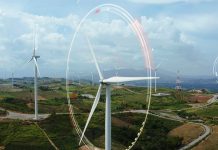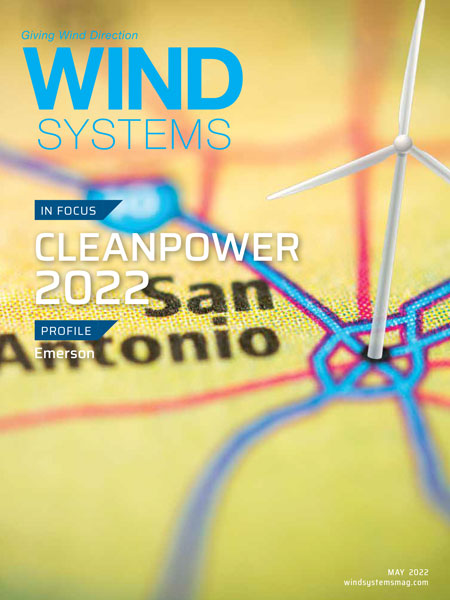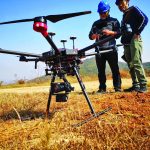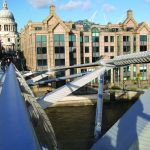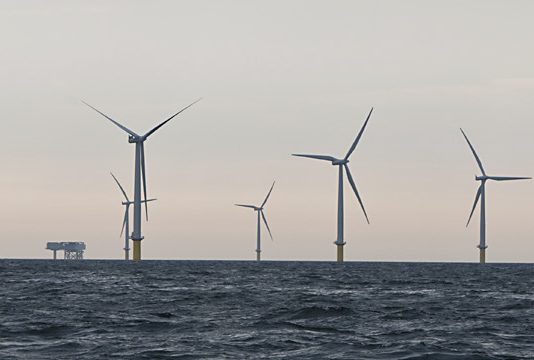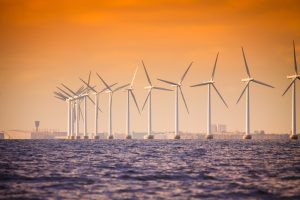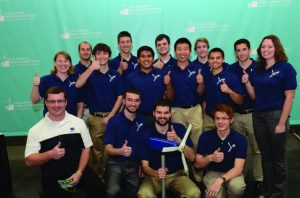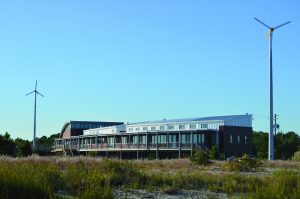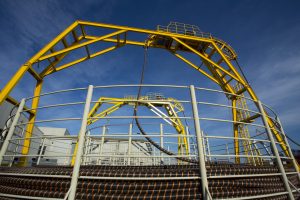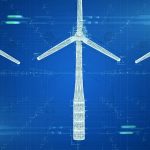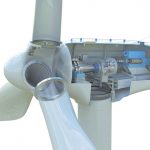As offshore wind takes off in the U.S., it becomes even more vital that the infrastructure is in place to ensure wind farms are constructed as safely and as efficiently as possible.
The Crosby Group — with its recent acquisition, Airpes — is expanding its expertise and move into the wind-energy segment.
“The Crosby Group is a leading manufacturer of fittings for lifting, rigging, and securement,” said Crosby CEO Robert Desel. “Those are used across many, many, many, many industries, including wind. Basically, anything that’s getting lifted by a crane, there are Crosby fittings involved in that somewhere. It could be steel for a stadium, or it could be a nacelle for wind, or it could be a blade or something in offshore oil and gas.”
Having years of experience historically with oil and gas, both on land and offshore, The Crosby Group has the DNV certifications and many other credentials needed for offshore work, according to Desel.
“We’ve always had those products,” he said. “Obviously, as of late, more and more of those products are moving into the wind-energy segment, but many of the products that we make would work in any industry. Also, anything that a floating wind installation needs to be anchored or moored to the seabed, we make all of those mooring fittings to connect that to the seabed.”
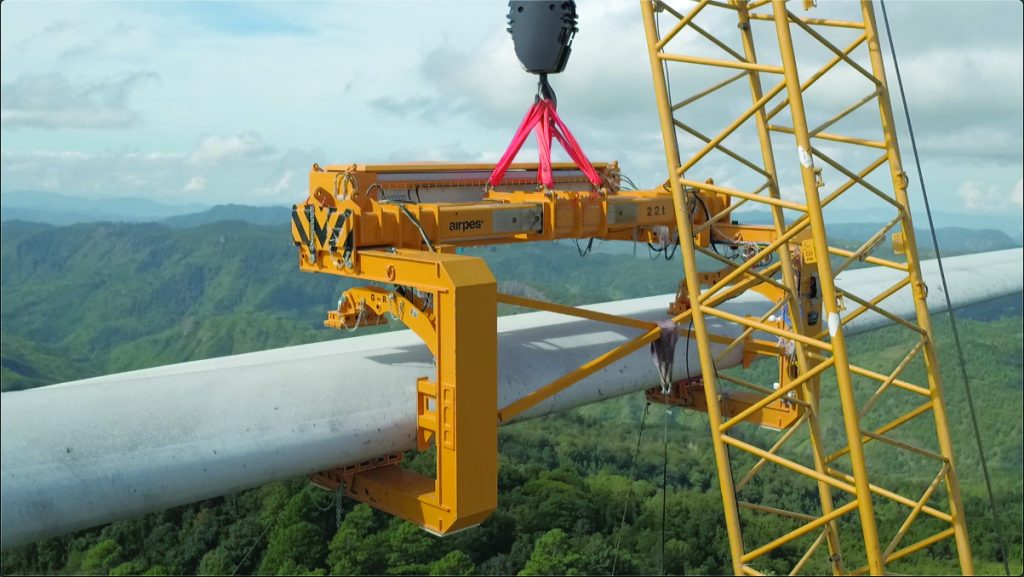
Specialized Equipment
With Airpes’ expertise being mostly focused on wind energy, its specialized equipment has been fitted to work with Crosby’s hardware to complete onshore and offshore installations.
Airpes has worked in the lifting market for about 20 years, according to Josep Compte Guillen, managing director and co-founder at newly acquired Crosby Airpes. The company began with onshore designs for lifting beams for the nacelles and later moved to yoke blade clamps for the installation of the blade, often considered the most complicated part of turbine installation.
That innovation is what has enabled Crosby to take its fitting equipment and marry it with Airpes’ ability to engineer specific tools for turbine parts.
“The very thing that happens is the OEMs ask us for a design,” Guillen said. “Usually, we get an RFQ for the solution they need, and we design from the beginning, and we offer our solution. If we want the project, we have to make the design from zero to manufacturing the first value prototype.”
Onshore vs. Offshore
Onshore projects all have similarities, and even though offshore projects aren’t as mature as their onshore counterparts, there are still certain absolutes to consider, according to Desel.
“You’ve got different sea conditions; you’ve got different vessel characteristics, so I think the offshore projects are a little bit different from one another,” he said. Airpes builds the lifting tools that are custom designed to the specification of the blade or the nacelle that a Siemens or a Vestas or a GE would make.”
Those lifting tools must take into account the integrity of the part being lifted, according to Desel.
“The blades, as you can imagine, are very fragile,” he said. “The way you pick up and move those needs to be tailored to the shape and dimensions and the weight and center of gravity of that blade. What Airpes does is they’ll work with Siemens Gamesa, for example, to build a lifting tool for a specific series of blades, and that lifting tool could be used over and over and over again. They offer service, repair, maintenance, and retrofit to ensure that lifting tool can have a very long life, but it would be a different tool for a GE blade or a different tool for a Vestas blade, because of the characteristics of those blades. The process onshore is fairly similar. The tools would be different based on the geometry of the blades and the manufacture of the blades.”
Unique Characteristics
Even though many projects may have similarities, each wind-farm project has its own unique characteristics based on the depth of the water, according to Desel.
“Are they using jack-up vessels? Is it floating or is it non-floating? What is the size of the turbines?” he said. “One common thing that we see in offshore vs. onshore is one, you have less time. Because of the cost of the vessels and the infrastructure, you have to put these up very quickly. Two, you have less space. You’re basically working on a vessel. Even though you have the vast ocean out there, there’s no stable operating platform. Whereas on land, you can stage stuff all over the land. The speed and the space are the things that are very different with offshore vs. onshore.”
Guillen agreed with the different complexities of offshore vs. onshore.
“For offshore, some manufacturers are installing and switching some turbines in less than 20 hours,” he said. “This is an amazing job. It’s very safe; it’s quick. It’s very exciting to get a project for offshore. And under the Crosby name and Crosby experience, we are going to be able to get more projects in this market than we did before.”
Pushing for U.S. Advancement
Admittedly, offshore wind is a much more vibrant market in Europe, which means that a lot of the expertise needed for offshore development in the U.S. will naturally start in Europe.
“The big players in marine installation, many of them are European,” Desel said. “For the U.S. market — and this is kind of a broad commentary — we have a lot of work to do to build the infrastructure and the capabilities around vessels and constructing vessels and ports to support the kind of vibrant offshore wind industry that you see in Northern Europe in particular. And listen, I have no issue with that expertise coming from Europe, but I do think we have an opportunity to build expertise here. It is a lot of European companies assisting the U.S. power or project teams in doing the installation. I think we’re going to have to build that capability here. Crosby’s committed to doing its part for our little piece of that value chain to build more capability on the ground in the U.S. with U.S.-made products and U.S.-supported products to support the wind industry generally, but obviously offshore is where there’s quite a bit of growth opportunity.”
And that growth opportunity will more than likely make way for a lot of potential when it comes to the U.S. industrial market in general, according to Desel.
“I think it’s going to bring some much-needed investment to ports and to vessel construction and to a whole host of areas,” he said. “We’re committed to doing our part. Our forging plant, which is, I think, probably the largest lifting hardware forging plant in the world, is in Longview, Texas. We sell our products through local distribution. Many of those companies are small, family-owned businesses. As offshore wind starts to develop in different parts of the country, that plant in Texas is going to be there as support. Then, just as importantly, our local family-owned distributors are going to be participating in that value chain as well, since they’re very close to the point-of-delivery of the product.”
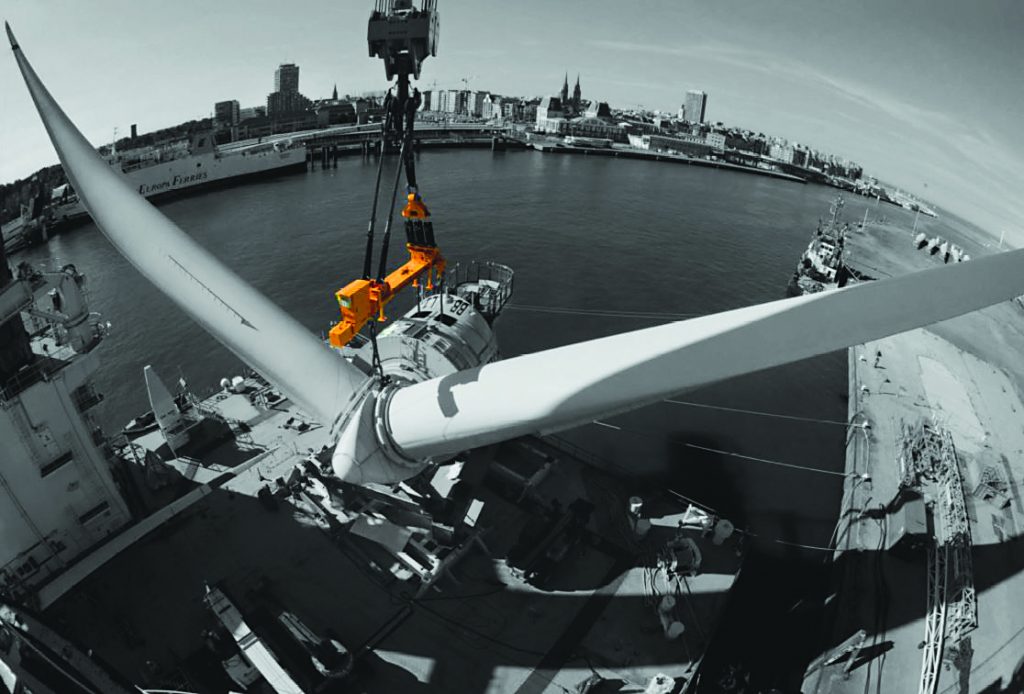
Future Turbine Construction
The fact that Crosby’s products are so adaptable to wind-specific jobs will certainly help expedite future turbine construction, according to Desel.
“We try to make our product very, very, very ubiquitous,” he said. “Now, there are some things that are very tailored, like the product that (Airpes) makes is extremely tailored because of the bespoke nature of the blades. Everything else around that connects to the crane — could be a shackle, could be our camera systems that we mount on one of Airpes’ products, could be our load cells to help understand how much weight and whether it’s getting out of balance. Those could be used across multiple, multiple industries. Obviously with our history in offshore, all of our product is offshore ready and certified. That makes it more usable. Then when it comes to floating, our mooring products historically came out of the oil and gas industry where you have big oil rigs that need to be moored, and they need to be secured, and we make the connections. We are actively in the process of repurposing those to work on floating offshore wind.”
Basically, some elements are ready to go, while others will require some adjustment, according to Desel.
“(At that point), you have the very, very highly-engineered, custom solutions that Guillen and his team in Barcelona design and manufacture, which are unique to a Siemens Gamesa blade or unique to a Vestas nacelle or whatever the case may be,” he said.
Standardizing Equipment
Part of what will help advance the offshore wind industry will be the eventual standardization of equipment, similar to what has occurred within the offshore oil and gas industry, according to Desel.
“If you look at oil and gas, there’s a very mature supply chain that supports that,” he said. “There are three or four different drilling models that you can use. There are some standard approaches to the market, and then people can scale up around those standards. We make a product that originally was built for a mobile offshore drilling unit that can be used in any mobile offshore drilling unit anywhere in the world. Doesn’t matter who made it or where it’s operating. In floating offshore wind, we don’t have that standardization yet. I mean, every day, I feel like I see another concept on floating turbines in the news.”
The solution, Desel said, is to pare all these designs down to a few scalable, viable solutions that the industry can support, because if every floating offshore farm is of a completely different design, it’s going to be inefficient to scale and support.
“Just like when Guillen does a blade clamp that’s designed to lift that certain blade type hundreds of times, they don’t change the blade design on every single wind turbine,” he said. “No one would be able to do that. I think we need more standardization and more scale. Then, I think we’ve got to build out some of this infrastructure and be a little bit more locally self-sufficient in some areas. And as I said, The Crosby Group is committed to doing its part.”


















